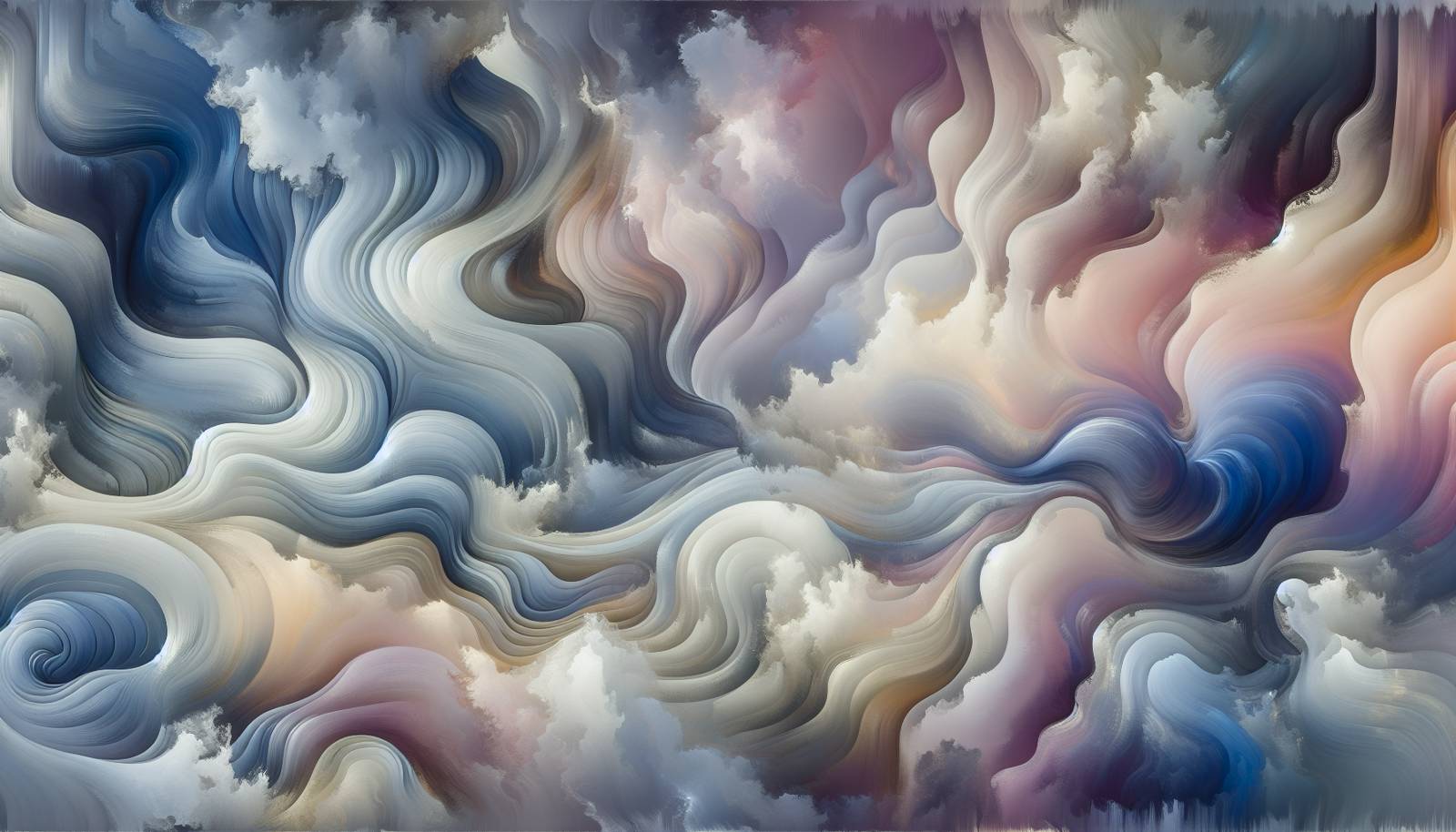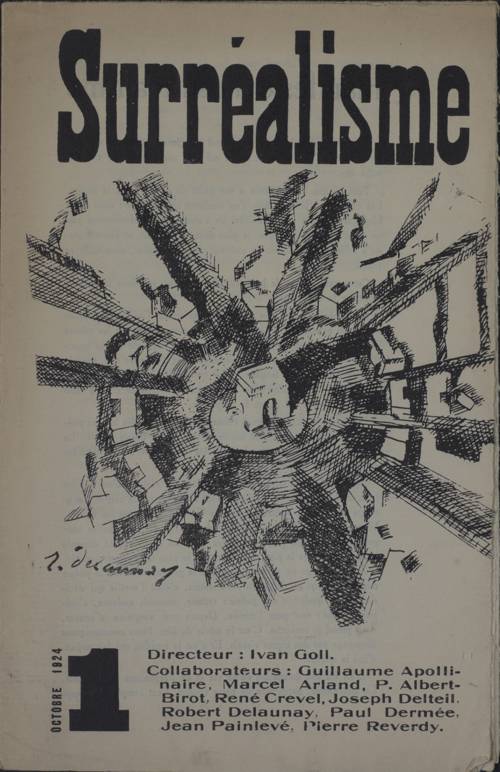
FAQ About The Influence of Surrealist Poetry on Modern Literary Forms

What is surrealist poetry?
Surrealist poetry is a literary movement that emerged in the early 20th century, characterized by the use of fantastical and dream-like elements. This genre often incorporates illogical scenes and bizarre imagery to challenge the reader's perception of reality.
Surrealist poets aim to unleash the creative potential of the unconscious mind, often drawing upon dream exploration as a central theme. The movement was initially inspired by the works of Sigmund Freud and his ideas about the subconscious.

How did the surrealist movement begin?
The surrealist movement began in the 1920s in Paris, as an offshoot of the Dada movement, which was a response to the devastations of World War I. It was founded by the poet André Breton, who published the first Surrealist Manifesto in 1924, seeking to revolutionize human experience and challenge established norms through unconventional artistic expression.

Who are some key figures in surrealist poetry?
Some key figures in surrealist poetry include André Breton, Paul Éluard, Louis Aragon, and Philippe Soupault. These poets were instrumental in shaping the principles of surrealism, using their literary work to explore subconscious imagery and automatic writing techniques.

What are common themes found in surrealist poetry?
Common themes in surrealist poetry include dreams, the subconscious, and the exploration of the irrational mind. Other recurring motifs include juxtaposition of unexpected elements, the breakdown of conventional structure, and transcendence beyond societal norms.
Many surrealist works aim to disrupt the reader's logical thinking processes and encourage a deeper engagement with their own subconscious.

How has surrealist poetry influenced modern literature?
Surrealist poetry has had a profound impact on modern literature by challenging traditional narrative forms and encouraging writers to delve into their subconscious. The emphasis on dreams and irrationality can be seen in the works of contemporary authors who explore themes of the absurd or engage in non-linear storytelling.
Furthermore, the techniques of juxtaposition and disruption of ordinary reality continue to inspire modern writers across various genres, from fiction to poetry.

Can you provide an example of a contemporary poet influenced by surrealism?
An example of a contemporary poet influenced by surrealism is Alice Notley, known for her experimental style and exploration of dreams and the subconscious. Her work often employs surreal imagery and non-traditional structures, a testament to the enduring influence of surrealist poetry.

What is automatic writing, and how is it used in surrealist poetry?
Automatic writing is a surrealist technique where the writer records thoughts without conscious self-censorship, allowing words to flow spontaneously. This method aims to access the unconscious mind and liberate creative expression from rational constraints.
In surrealist poetry, automatic writing is used to produce unexpected imagery and associations, contributing to the dream-like quality characteristic of the genre.

How do surrealist poets use imagery in their work?
Surrealist poets commonly use vivid and unexpected imagery to provoke thought and emotion. By juxtaposing diverse and sometimes contradictory elements, they create scenes that appeal to the subconscious rather than relying solely on logic or realism.
This approach encourages readers to interact with the work on a deeper, more intuitive level, often drawing connections between seemingly unrelated ideas.

Are there any surrealist poets from countries outside of France?
Yes, the surrealist movement spread far beyond France, influencing poets worldwide. Renowned surrealist poets from other countries include the Spanish poet Federico García Lorca, the Chilean poet Pablo Neruda, and the Mexican poet Octavio Paz. Each brought unique cultural elements to their surrealist works while maintaining the movement's core emphasis on the subconscious and dream-like motifs.

What role did dreams play in surrealist poetry?
In surrealist poetry, dreams serve as a gateway to the unconscious mind, providing material for exploration beyond the confines of rational thought. Poets are inspired by the structure and content of dreams, which often defy logic yet resonate with deep emotional truths.
This focus on dreams allows surrealist poets to craft works that transcend reality and explore themes of fantasy, myth, and the human psyche.

What techniques distinguish surrealist poetry from other poetic forms?
Surrealist poetry often distinguishes itself through techniques such as automatic writing, unusual metaphors, and the blending of different sensory experiences. The emphasis on spontaneous creation without the constraints of traditional form sets it apart from other styles.
Additionally, surrealist poetry eschews conventional narrative structures in favor of fragmented and dream-like sequences that invite multiple interpretations.

Why is surrealist poetry still relevant today?
Surrealist poetry remains relevant because it challenges readers to question reality and the limitations of conventional thought. Its innovative approaches to language and narrative continue to inspire contemporary writers and artists who seek to push the boundaries of creative expression.
The movement's focus on the subconscious mind and exploration of dreams resonates with audiences interested in psychological and philosophical themes, ensuring its enduring appeal.

How does surrealist poetry relate to the theme of freedom?
Surrealist poetry is intrinsically linked to the theme of freedom through its rejection of conventional artistic and social constraints. By prioritizing the unconscious mind and irrationality, surrealist poets seek liberation from the limits of logical thinking and traditional structures.
This pursuit of artistic freedom is a central hallmark of the movement, offering both poets and readers a chance to explore new possibilities of thought and expression.

Can surrealist poetry be considered political?
While not always overtly political, surrealist poetry often challenges societal norms and encourages dissent against established structures. By breaking away from conventional forms, it can be seen as a form of resistance against intellectual and artistic conformity.
Some surrealist poets directly engaged with political themes, using their work to critique social conditions and urge revolutionary change, thus highlighting the potential political dimension of the movement.

Has surrealist poetry influenced other art forms?
Yes, the principles and techniques of surrealist poetry have influenced various art forms, including visual art, theater, and film. The focus on dream-like imagery and the unconscious mind has inspired artists such as Salvador Dalí and filmmakers like Luis Buñuel to explore similar themes in their works.
This cross-pollination of ideas highlights the interdisciplinary nature of surrealism, contributing to its enduring legacy across multiple artistic disciplines.

What distinguishes surrealism from other literary movements like modernism?
While both surrealism and modernism emerged as reactions to the social and cultural changes of the early 20th century, they differ in focus and methodology. Surrealism places a strong emphasis on unconscious processes, fantasy, and the illogical, whereas modernism seeks innovation within the framework of order and structure.
Modernism often explores themes of alienation and fragmentation in a rational context, while surrealism freely embraces the irrational and the dream-like, seeking to disrupt and redefine accepted norms.

What impact did Sigmund Freud's theories have on surrealist poetry?
Sigmund Freud's theories on the subconscious greatly influenced surrealist poetry by providing a framework for exploring the human psyche. His ideas on dreams, repression, and free association fueled the surrealist emphasis on the irrational and the spontaneous.
Freud's exploration of the hidden aspects of the mind encouraged surrealist poets to delve into unconscious imagery and challenge the boundaries between reality and fantasy.

Are there any contemporary literary genres that show surrealist influence?
Contemporary literary genres such as magical realism and speculative fiction show distinct influences of surrealism. These genres often incorporate surrealist techniques by blending realistic narratives with fantastical elements, offering readers unique explorations of reality and imagination.
Works in these genres might employ dream-like settings and unexpected juxtapositions, echoing the legacy of surrealist poetry's impact on modern storytelling forms.

What is the legacy of surrealist poetry in contemporary culture?
The legacy of surrealist poetry in contemporary culture is visible across literature, art, and media. Its innovative use of language and imagery continues to influence poets, writers, and creators who seek to challenge norms and explore the unconscious mind.
Additionally, surrealist poetry's focus on themes like dreams and the absurd resonates with modern audiences drawn to psychological and fantastical explorations, ensuring its relevance and appeal to this day.

How does surrealist poetry engage with storytelling?
Surrealist poetry engages with storytelling by transcending linear narratives, embracing disjointed and dream-like sequences instead. This form allows poets to weave tales that invoke mystery and wonder, encouraging readers to engage with the subconscious and explore multiple potential meanings.
By abandoning traditional structures, surrealist poetry fosters a dialogue between reality and imagination, prompting personal interpretation and profound reflection.
